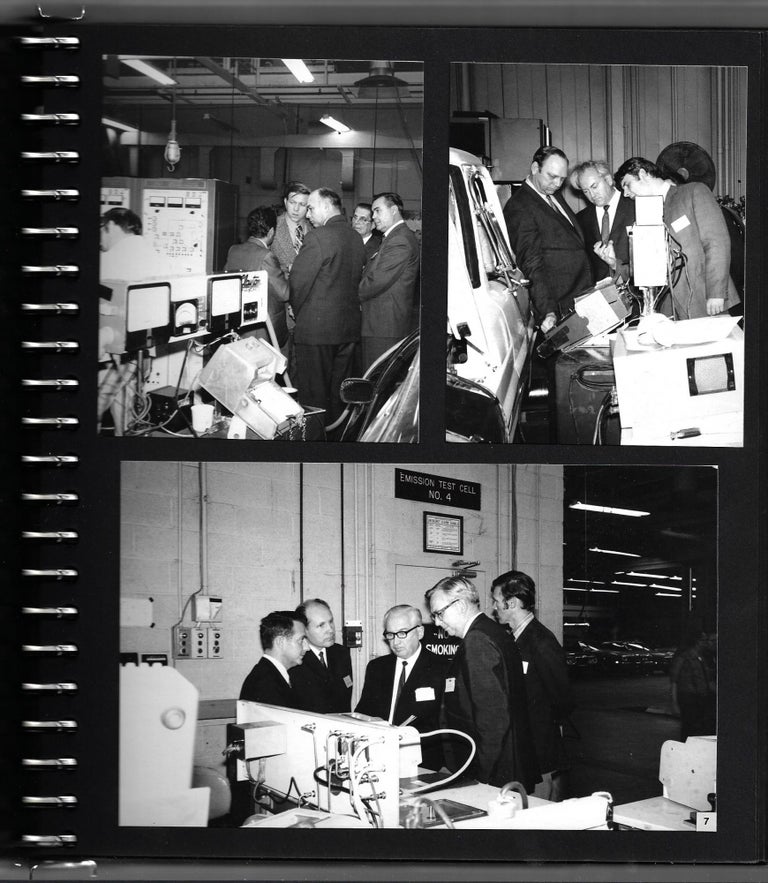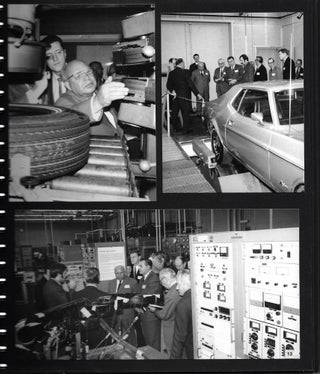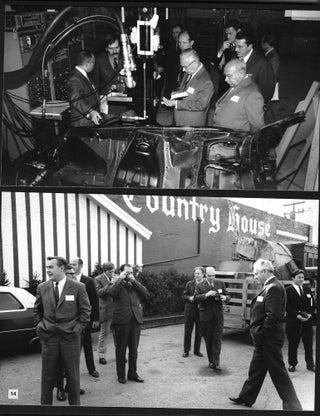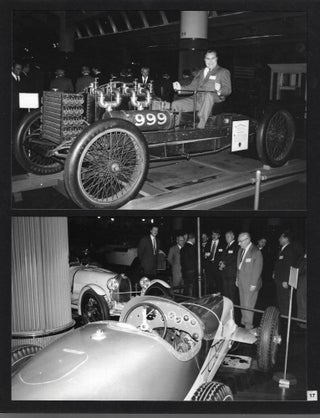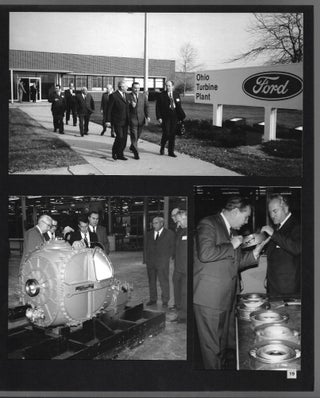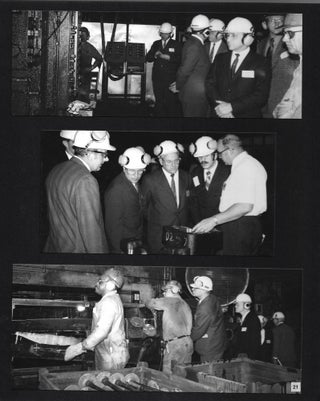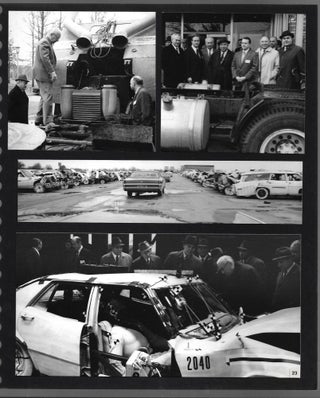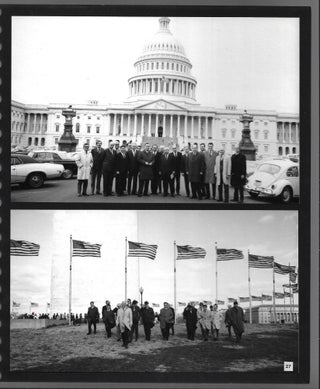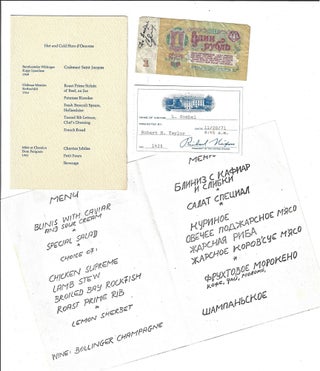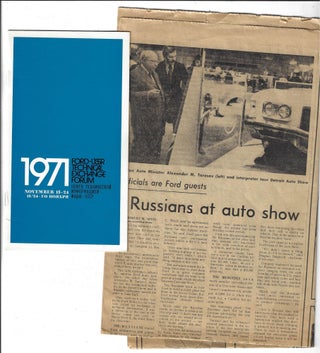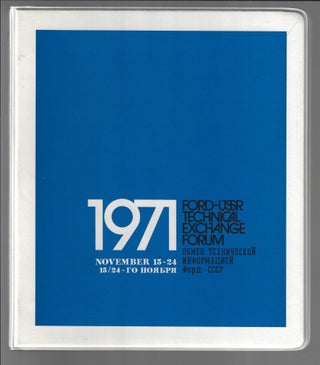Small Archive Documenting the Ford-USSR Technical Exchange Forum of 1971
[Dearborn, MI]: Ford Motor Company, 1971.
Two three-ring binders made for participants in the Forum (with titles printed in English and Russian), containing a total of 121 professional black and white photographs ranging in size from 3.5 x 4 inches to 5.75 x 7.75 inches, as well as some related ephemera: menus from dinners at Ford Headquarters and at the Washington Hilton (where the Russians were served blinis with caviar and sour cream), a White House visitor’s pass, a miniature Soviet flag, a one-ruble note, and a bilingual program for the forum. All in very good condition or better.
In November 1971, the Ford Motor Company hosted a delegation of eleven Russian engineers and government officials for a ten-day exchange of technical information about automobile design and production. The program included visits to Ford engineering, manufacturing, and assembly facilities in Michigan, Ohio, and Kentucky; a trip to the Detroit Auto Show; and a two-day sightseeing excursion to Washington, D.C. The previous year, Henry Ford II had visited the Russia at the request of the Soviet Ministry of Science and Technology. The Soviets presented Ford with a proposal to build an enormous truck factory there. Ford gave the project serious consideration, but reluctantly bowed out when pressured by the American government. U.S. Defense Secretary Melvin Laird argued against the project on the grounds that the new trucks would find their way to North Vietnam. But the Soviets believed there was more strategic motive – that the U.S. was trying to keep them in a state of perpetual economic underdevelopment. This was probably true, and the U.S. also would have been concerned that a large fleet of new and better trucks would strengthen the Soviet military. Nonetheless, Ford maintained an interest in doing business with the Soviet Union, hoping to be part of any trade that developed between East and West.
Knowing that their interactions with the Soviets were perceived by many as unpatriotic or even dangerous, Ford issued no press releases about their technical exchange forum and flew their visitors to Washington on a private plane to avoid press attention. The Detroit News—possibly the only newspaper to get the scoop—reported that “Ford tried to avoid any publicity on the visit out of fear of some embarrassing demonstrations.” Due to this circumspection, relatively little information Is available about this unusual Cold War-era visit. This archive helps to fill in some of the long-forgotten details. Photo show each stage of the visit, including various meetings, seminars, and receptions; tours and demonstrations at the Livonia Transmission Plant, Reliability Testing Laboratory, Ohio Turbine Plant, Cleveland Engine Plant, Woodhaven Stamping Plant, Kentucky Truck Plant, and other Ford facilities; and visits to the Henry Ford Museum, Detroit Auto Show, and the White House, Smithsonian, Capitol Building, etc.
Although the Ford Company was hesitant to publicize their continuing exchange of information with the Soviets, they surely had the support least some faction of the Nixon Administration; without it, the visit would not have happened—and they certainly would not have brought the Russians to the White House. In this respect, the material in this archive offers important documentation of the beginning of “Détente”—a period of improved relations between the United States and the Soviet Union that would emerge more fully the following year, when President Nixon visited Leonid Brezhnev in Moscow and the first SALT (Strategic Arms Limitation Talks) treaty was signed.
Item #20038
Sold



